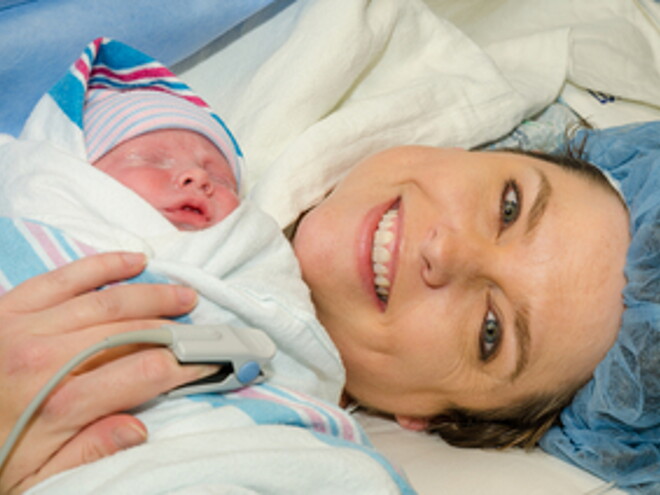
C Section Recovery Guide
What You Need To Know About Giving Birth By Cesarean Section
Vaginal birth is the regular way to have a baby. During this normal process, the baby is delivered by natural means and without any medical intervention of any kind.
Cesarean section or c-section is the medical model of childbirth. During this type of delivery, the baby doesn’t pass through the birth canal, yet is pulled out through the cut that the doctor makes in the mother’s belly and uterus.
Unlike vaginal birth, c-section requires a surgery, an operation room and a sterilized environment.
In almost all cases, doctors opt for vaginal delivery over c-section, as it’s the safest choice for both the baby and the mother, unless the latter has complicated health issues that need a prior agreement on c-section and a full preparation for same before the due date, such as:
- Inability to go through labor for many reasons including heart diseases.
- Too small pelvis to vaginally deliver a baby.
- Serious health issues that may put baby’s health at risk, like AIDS and Herpes.
- Prior c-section delivery.
- Placenta partially or fully blocking the uterus, like in the case of Placenta Previa.
- Placental abruption, like in the case of early placental detachment.
- Pregnancy with twins.
- Obesity making labor last longer.
But, in some urgent cases, c-section is an emergent decision, as the need for surgery isn’t always obvious to be planned beforehand. Hereby are the most important causes of emergency c-sections:
- Umbilical cord problems, such as cord prolapse, cord narrowing and cord compression.
- Baby showing tiredness symptoms, like slow heart rate and lactic acid buildup in the blood because of insufficient oxygen supply.
- Diagnosing baby with specific diseases, such as heart diseases and spinal cord paralysis.
- Uterus tearing because of mother’s hard pushing.
- Contractions for over 24 hours and not going into labor.
- Failure to progress in labor despite a cervical dilatation of 3cm.
- Baby’s big size.
And between planned/ elective surgeries and urgent ones remain some cases where caesarean delivery depends only on the doctor, like in the cases of placenta bleeding, baby’s breech position, no signs of labor after 24hours of water breaking, etc.
It’s true that c-section is life-saving for both mother and baby in the cases listed above, yet nothing can deny the fact that this childbirth model is like any other surgical procedure and can lead to many complications, such as endometritis, injuries to body organs and blood vessels, heavy bleeding, allergy to anesthetic drugs and blood thrombosis.
Moreover, cesarean delivery may cause the baby some problems upon delivery, like skin injuries and breathing difficulties that require intensive care.
As for the healing process from c-section, it may be more difficult than a vaginal birth, knowing the severe pelvic pain it may cause.
C-section may also increase the likelihood of the baby getting chronic diseases, such as asthma and diabetes.
So, if you’re preparing yourself to have a c-section or you just want to know more about it out of pure curiosity, read on and have a quick look over the procedure’s different stages:
Before the surgery, the mother gets the anesthesia injection that must paralyze the inferior parts of her body while keeping her conscious and in full ability to witness her baby’s birth. Here are the most common anesthetic options used: the spinal block that pumps medication in the bag surrounding the mother’s spinal cord and the epidural block which injects anesthesia in the mother’s low back outside the bag surrounding the spinal cord.
During the surgery, the doctor makes a first transversal incision in the low abdomen and another similar incision in the lower part of the uterus so he would be able to pull out the baby and the placenta. As soon as the baby is born and the umbilical cord is cut, fluids are removed from his respiratory tract. Baby is then swaddled with a light blanket and put next to his mother, unless he suffers from a health condition that requires tests and examinations to be performed.
After the surgery, the mother will feel lots of pain and that’s normal. But the drugs that will be prescribed by her doctor and that are safe for breastfeeding, will lessen her discomforts.
Throughout the recovery period, it will be better if she puts a pillow on her incision every time she feels the urge to cough, sneeze or laugh, cleans her scar and protects it from infections, avoids carrying heavy things and drinks lots of water and fluids to help her body functions properly and stays away from dehydration and infections.
At the end, it is to be noted that the best delivery is a safe delivery and giving birth to a healthy child is the perfect delivery!
Read More: 10 Super Foods Your Body Needs Post Delivery

